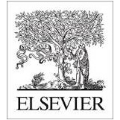The ubiquitous presence of smart devices along with advancements in connectivity coupled with the elastic capabilities of cloud and edge systems have nurtured and revolutionized smart ecosystems. Intelligent, integrated cyber-physical systems offer increased productivity, safety, efficiency, speed and support for data driven applications beyond imagination just a decade ago. Since several connected devices work together as a coordinated unit to ensure efficiency and automation, the individual operations they perform are often reliant on each other. Therefore, it is important to control what functions or activities different devices can perform at a particular moment of time, and how they are related to each other. It is also important to consider additional factors such as conditions, obligation or mutability of activities, which are critical in deciding whether or not a device can perform a requested activity. In this paper, we take an initial step to propose and discuss the concept of Activity-Centric Access Control (ACAC) for smart and connected ecosystem. We discuss the notion of activity with respect to the collaborative and distributed yet integrated systems and identify the different entities involved along with the important factors to make an activity control decision. We outline a preliminary approach for defining activity control expressions which can be applied to different smart objects in the system. The main goal of this paper is to present the vision and need for the activity-centric approach for access control in connected smart systems, and foster discussion on the identified future research agenda.
翻译:智能、一体化的网络物理系统能够提高生产率、安全性、效率、速度和支持超出想象的数据驱动应用,而仅仅十年前,这些系统就为超出想象范围的数据驱动应用提供了更高的生产率、安全性、效率、速度和支持。由于几个连接的装置作为一个协调单位一起工作,以确保效率和自动化,它们所执行的单个操作往往互相依赖。因此,重要的是要控制不同装置在特定时刻能够发挥哪些功能或活动,以及它们彼此之间的关系如何。同样重要的是要考虑其他一些因素,如活动的条件、义务或易变性,这些因素对于决定一个装置能否开展所要求的活动至关重要。在本文件中,我们迈出了第一步,提出和讨论关于智能和相互关联的生态系统的活动-计算机访问控制(ACAC)概念。我们讨论了关于协作和分布式综合系统的活动概念,并查明了与活动控制决定相关的不同实体。我们概述了界定活动控制方式的初步方法,用以确定一个活动控制方式,用于确定一个智能型目标,并将当前的核心议程用于促进核心系统。我们概述了关于当前智能访问目标的讨论方式,在确定这一核心系统中可以应用的智能访问控制方式。


